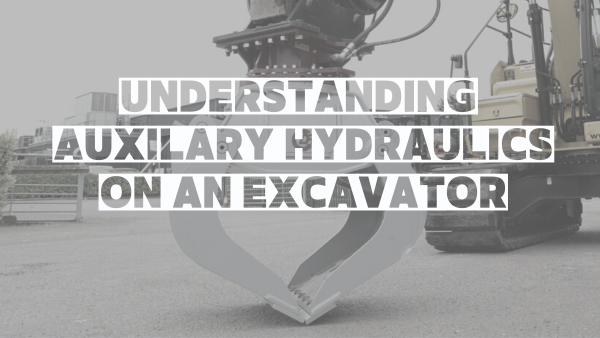Understanding Auxiliary Hydraulics on Excavators
Understanding auxiliary hydraulics can significantly benefit you when operating an excavator during your project. These excavator components are often overlooked. However, by grasping them, you will open the door to a wider range of versatility when operating. Throughout this resource article, we will take you through everything you will need to know about auxiliary hydraulics on excavators. Ultimately, increasing your overall productivity levels when operating a machine. Let’s get straight into it.
What are auxiliary hydraulics on excavators?
An auxiliary hydraulic system delivers hydraulic flow from a pump to operate equipment or excavator attachments. There are many excavator attachments that are designed to assist operators with completing their projects far more efficiently. Auxiliary hydraulics are found on most excavator designs and manufacturers. However, it is worth noting these features are not always standard.
It is essential that if you are considering using a hydraulic attachment from an excavator, the machine is fitted with an auxiliary hydraulic output. These systems are integrated into the body of the machine and lead to outputs onto the boom of the excavator.
The output valves for auxiliary hydraulic systems are where excavator attachments can plug into to operate. See the picture below to see an example of a hydraulic auxiliary output valve that is located on the arm of an excavator.

The benefits of operating an excavator attachments from auxiliary hydraulic outputs.
There is a wide range of benefits that come with operating an attachment from an auxiliary hydraulic output on an excavator.
- Reduce manual handling hours
- Increase productivity with task-specific attachment
- Reduce exposure to vibrations
- More efficient than handheld equipment
- Maximize productivity from one fixed position
Overall, these benefits not only increase productivity levels but also increase your efficiency and safety at the same time. This, in turn, results in faster, accurate work being completed. There is no doubt that the competency of the operator is a factor, however, the use of a hydraulic-operated excavator attachment will boost task efficiency.
Excavator attachments have been around for quite some time now and their continuous progression is providing further foundations to enhance job safety.
Things to consider when choosing a hydraulic excavator attachment
A vast amount of the excavator attachments available on the market to date are operate via the machine auxiliary hydraulic system. These attachments may require multi-auxiliary output flows to operate. You must ensure that your excavator is suitable to operate the desired attachment prior to purchasing or hiring the equipment. Failure to do so can lead to poor performance, machine failure or leakages.
Besides the attachment’s hydraulic requirements, you should ensure that you consider the following other factors:
- The gross weight of the attachment
- Pin sizes of your excavator
- Stability of the machine
- Reach capabilities
- The machine’s centre of gravity with the attachment connected
Examples of excavator attachments that use hydraulic auxiliary output
Let’s take a closer look at a range of attachments that use auxiliary hydraulics on excavators. Note not all of these attachments are available for each excavator weight category.
Grab
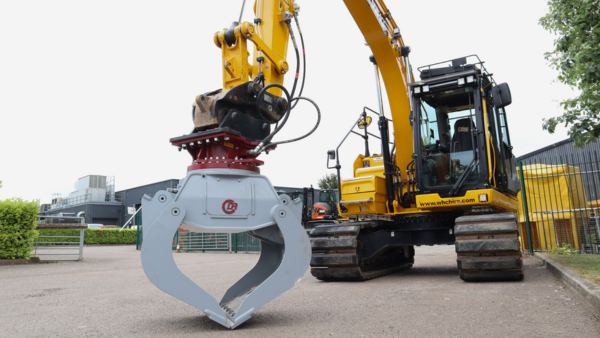
Selector grabs are ideal for demolition, sorting, processing, and utility installation. These attachments operate via 2 separate aux flows. One controls the opening and closing of the bucket, and the other, operates the 360-swivel head; aiding all grabbing tasks. See specs here.
Breaker

Breaker attachments are designed for breaking up rock and materials during the demolition phase of a project. They are commonly used on concrete, asphalt, or large rock in quarries. This attachment only requires a single flow auxiliary to fire the piston which creates the fracturing force. See examples here.
Vibrating plate
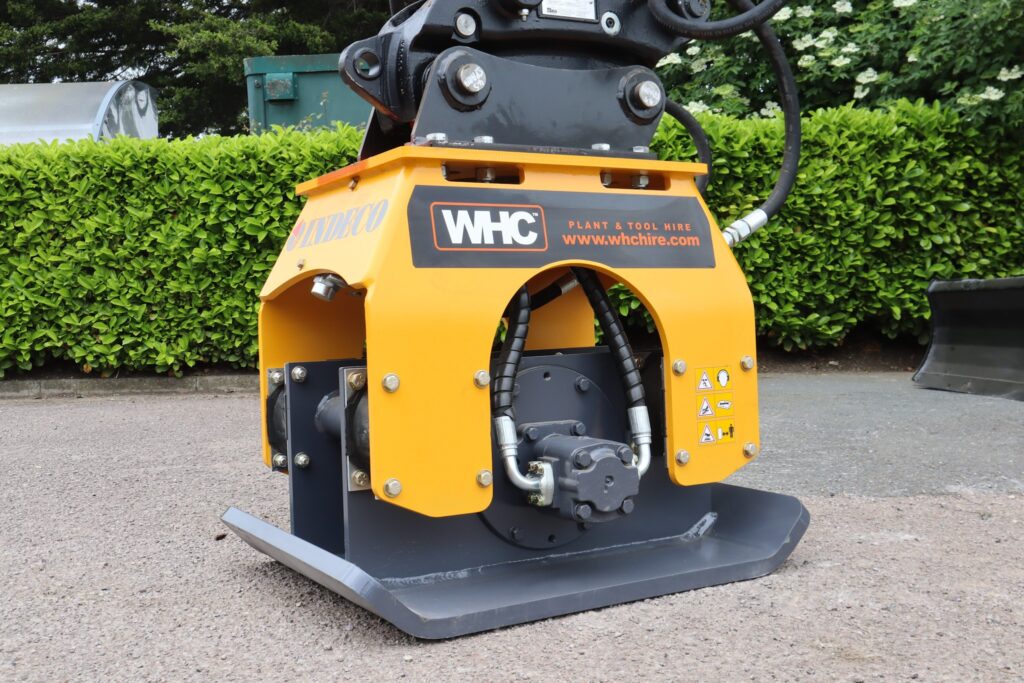
Vibrating plates provide a versatile compacting force for creating a solid, weight baring base. These can be used in trenches or above ground depending on project requirements. They operate on a single-flow auxiliary hydraulic system to fire the machine’s engine which provides the compacting force. See specs here.
Tilting bucket
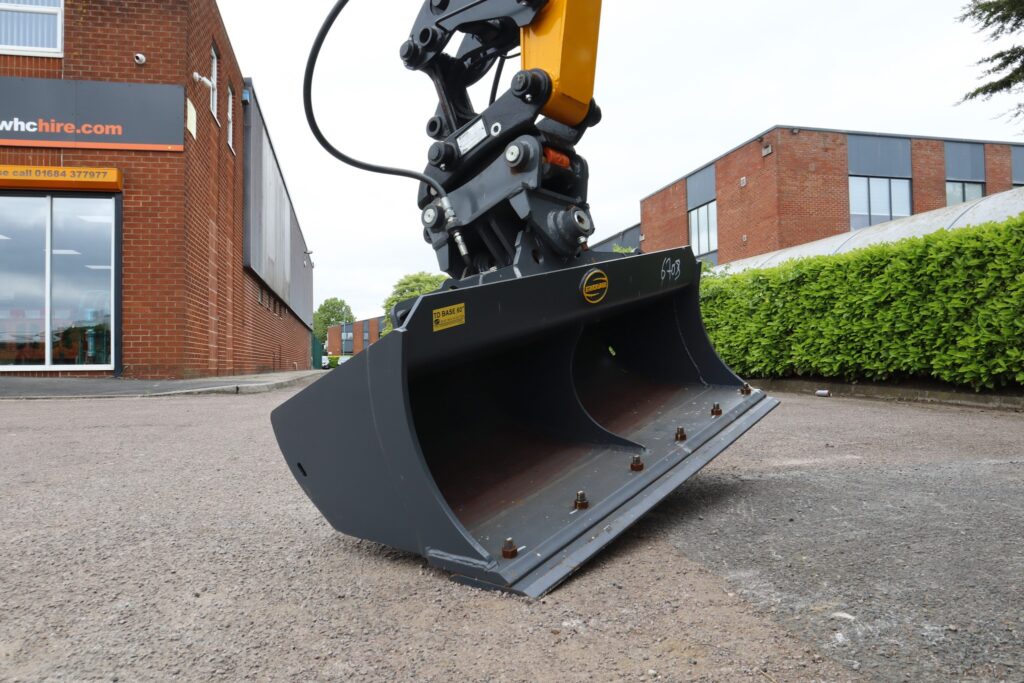
Tilting buckets come in a range of sizes and specifications and can be operated on single and dual-flow hydraulic auxiliary flows, depending on the design. These highly efficient excavator buckets can be tilted and, in some cases, spun to assist operators with all types of grading tasks. See example here.
Clamshell bucket
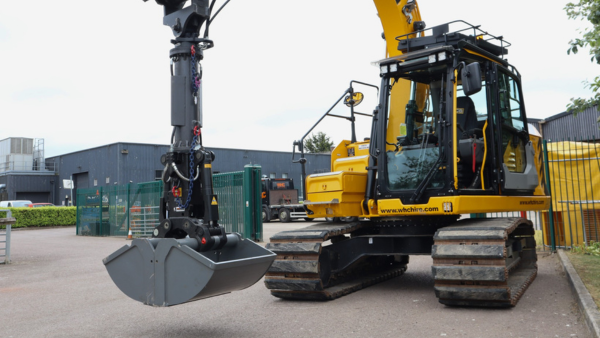
Clamshell buckets are very similar to grabs but are designed for loose material handling. For example, this could be for shingles, gravel, earth and more. They provide very accurate unloading capabilities, ideal for many types of applications. These attachments operate with a dual hydraulic flow. First to operate the bucket, and the second is to operate the swivel of the attachment. See example here.
How to vent auxiliary outputs
The process of venting auxiliary circuits is essential to the safe coupling of any attachment. Failure to do so could lead to machine malfunction, damage, or potential injury to occur. The whole idea of the venting sequence is to remove pressure in the hydraulic circuits prior to connecting or disconnecting any type of auxiliary attachment. So, how do we vent an excavator’s auxiliary circuits?
Well, the truth is, each and every excavator is different in its sequence of doing so. However the same principles apply for the venting to occur.
- Start with the excavator turned off
- Lower left hand armrest
- Key on the position one
- Engage hydraulics or select circuit
- Click the venting option on the onboard computer or manually rock the toggle switch to release circuit pressure.
- This must be completed on all circuits before detaching.
Here are two different examples of the venting or de-pressuring sequence taking place on separate machines.
If you are unsure of the correct venting sequence of an excavator, then you should speak to your manufacturer or hire a supplier.
Why choosing the correct flow is important
Choosing the correct hydraulic flow for the attachment on your excavator is essential to safe operation. As we have already mentioned in this article, all attachments will have a specific flow rate they need to operate between. Too higher flow rate could damage the attachment and the machine. Too low, the attachment will not operate at all.
Choosing the correct flow is simple when you have an attachment that is compatible with the machine you are using. Even so, to optimise the flow rate of the hydraulics for an attachment, you will need to make some manual adjustments. These adjustments are done on the machines on board control panels under settings.
It is also extremely common for a lot of new excavators to have built-in attachment flow rates already programmed into their onboard computers. Always spend time working through the flow rates to optimise the way you can operate the machinery. It is always best advised to speak to your supplier to alter the auxiliary flow rates if you require further help.
Where you can maximise your productivity with auxiliary hydraulics on excavators
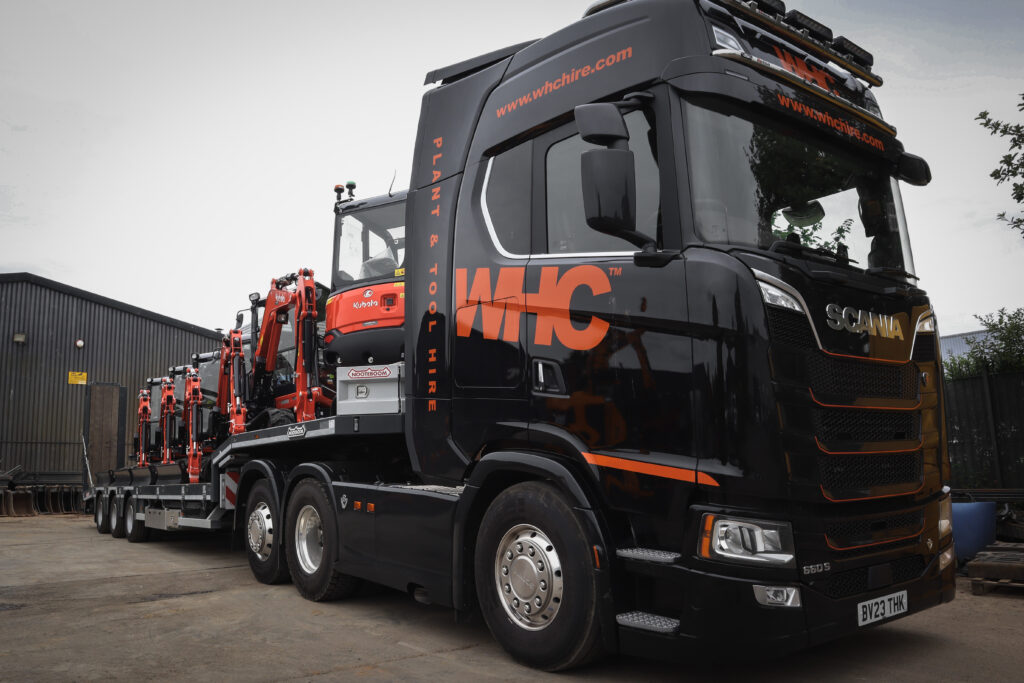
WHC Hire Services is an independent plant hire service that specialises in world-leading manufacturers of excavators and attachments. With over 25 years of experience, we pride ourselves on offering a wide range of equipment to tackle any project of any size in the UK. Whether you are looking for a local supplier or a national partner. WHC has the fleet, skill and availability to match demand.
Find out more about WHC by visiting our website here, or alternatively give us a call on 01684377977 today to discuss your business needs today.

